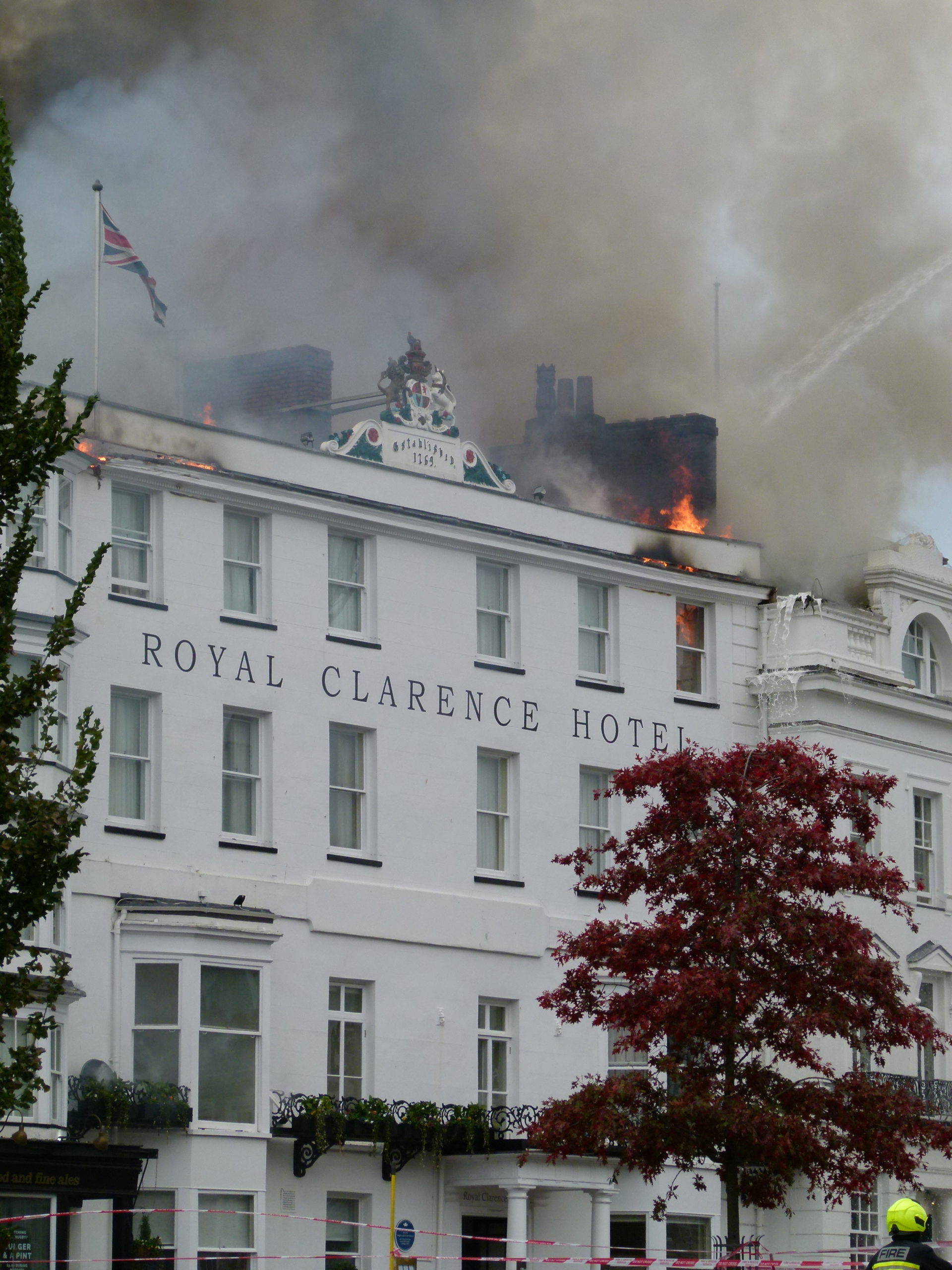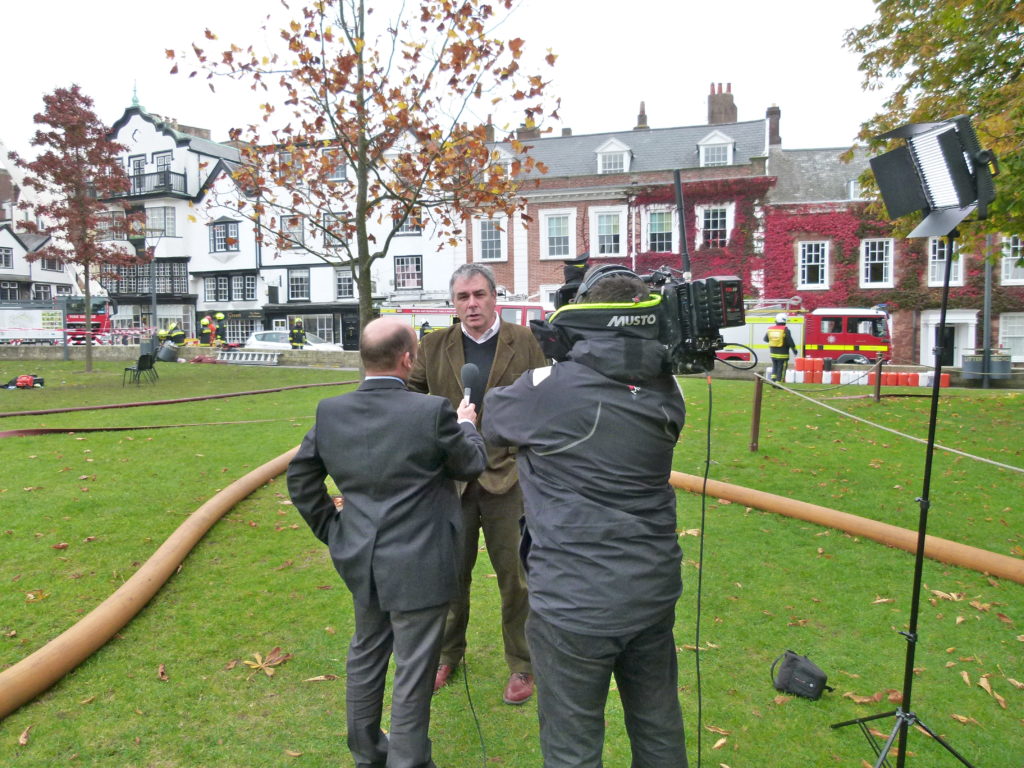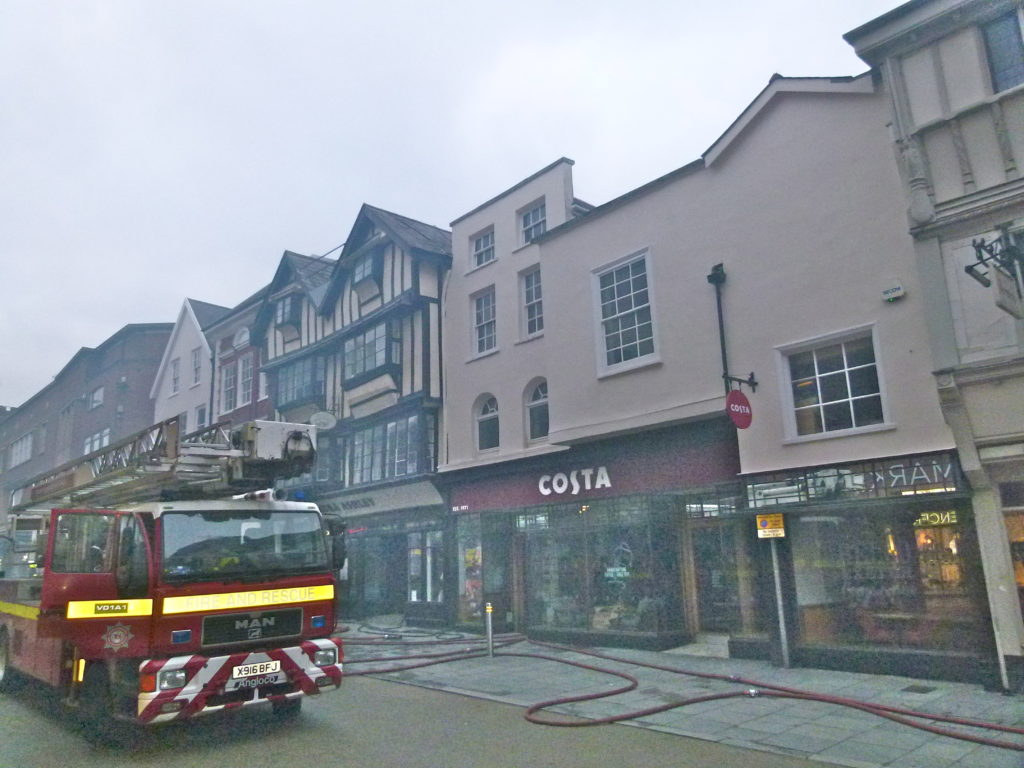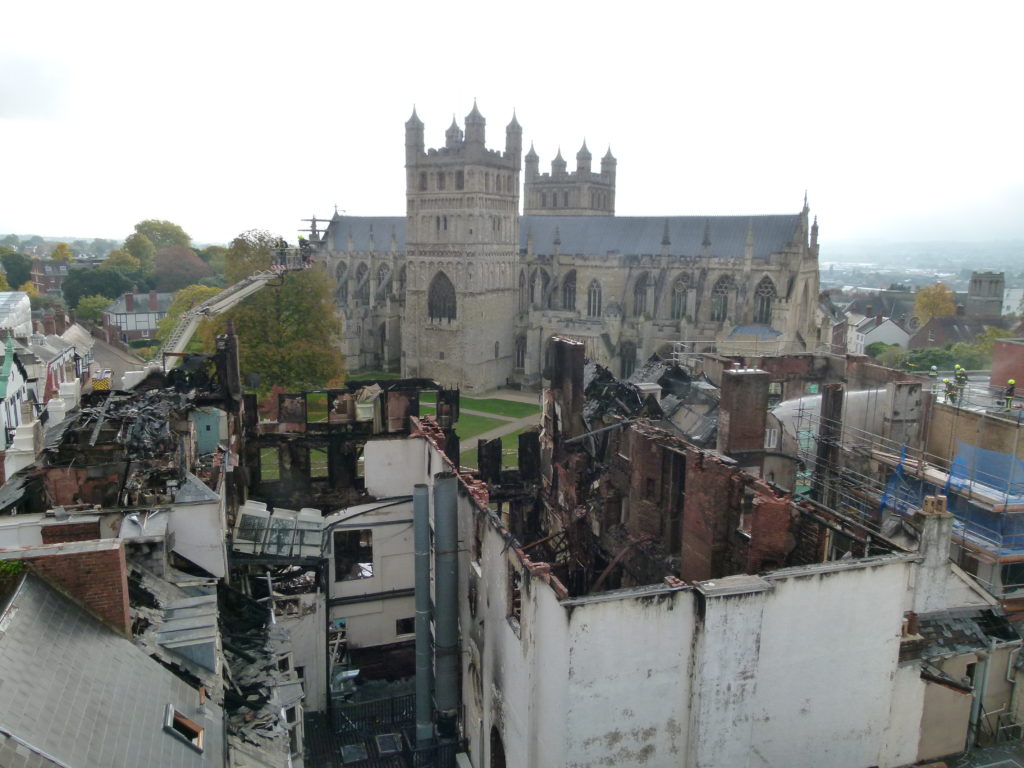
Posted by Todd Gray
14 November 2016Mid-morning on 28 October I received an urgent request from BBC Spotlight to provide historical background on an emerging news story in Exeter: the Royal Clarence Hotel had just caught fire. Within a few minutes I was in Cathedral Yard and watched in despair as the flames spread across the building. More than 150 fire-fighters, police and ambulance crews had already filled Cathedral Green. Over the next hour the knot of journalists increased to several dozen and I remained there for most of the following four days as the fire took hold of the building and refused to be put out. Requests by other journalists increased and I eventually gave more than 50 interviews to local, regional, national and international media in print, radio and television. These began at 7am on site but the latest one, at 10.30 pm, took place at home when the BBC organised it so I could Skype. However, the chaos of papers in my study was picked up upon by the engineer who suggested that I should tidy the background – I hadn’t the heart to point out that I had spent 10 minutes to make it, as I thought, look respectable.


The story had a tag which gave it national status: the fire was destroying ‘England’s First Hotel’. It seemed inappropriate in the midst of a disaster to nit-pick and state that this might not be the case, so I had to carefully note the Royal Clarence as being ‘long known as England’s first hotel’.
It transpired that I was in an advantageous position (situated within the police cordon and placed in the media area) and it was an ITN reporter who realised that only I had any knowledge of the historic nature of the buildings. In that opening hour I was given access to senior fire officers and relayed details of the buildings’ physical constructions and histories – I was able to draw upon the investigations which had been made by the now defunct Exeter Archaeology Unit. On one side of the main hotel building lies two merchant town houses of the early 1600s and behind the hotel block is a range of other similar buildings in the High Street, one at least of which was built in about 1500 or earlier, and these are more significant architecturally than the hotel itself. To my great relief the fire service stressed the saving of these merchant houses – these men and women achieved a near miraculous survival as the backs of the buildings, which adjoin the hotel, were already alight. Even so, while these fires were largely put out by Saturday, they continued to flare up and smoulder for the following few days.

By chance it was only a few months ago that I had acted as general editor for Jannine Crocker’s Elizabethan Inventories & Wills of the Exeter Orphan Accounts, a two-volume collection of documents published by the Devon & Cornwall Record Society (currently available by request through www.stevensbooks.co.uk) and it appears as though two of these High Street buildings have extensive inventories of the late 1500s. These provide a sense of use which bring alive these magnificent buildings – Exeter at its best. The publication of these documents is timely in that they will be useful in the imminent reinvestigation of these buildings.
On the second day of the fire, while the buildings were still burning, I was asked by Exeter City Council (ECC) to give a lecture on the disaster in the following week. Media appearances had made me a familiar face and I had previously worked with ECC on a number of projects. The council identified a public need to gather and a lecture would give a focus to this. Instead I suggested that I contribute to a session in which I would invite those building archaeologists who had extensive understandings of the buildings. I organised the event, all the speakers volunteered their time, and the venue, the Barnfield Theatre, was filled to capacity (300 seats). Another 150 people were turned away. A repeat event was similar. The first session was filmed by the council and is online via youtube. What has emerged is a passionate interest and support amongst the public for the city’s built heritage. I have rebranded the bloc of buildings ‘St Martin’s Island’ and this has been widely taken up.

This past fortnight Exeter experienced a palpable sense of shock and loss; the Clarence was a familiar building located in the most prominent part of the city. Until now the city’s most famous fire had been that of its theatre in 1887. This was followed by German bombing in WWII that destroyed more than a thousand buildings and killed hundreds of people. The fire at the Clarence, as traumatic as it was, gives just of what the loss must have felt like for Exonians two generations ago.
The experience has raised questions, for me personally, beyond merely the use of the present to understand the past. It became obvious that a historian’s presence at the fire was important but it required putting aside all other commitments and dedicating nearly a fortnight entirely to it. I was aware that Exeter University recieved a considerable boost in its media presence during this fortnight but also that it was taking a different form to that in which impact is normally measured. Perhaps what the experience has most clearly shown is one way in which historians can make a tangible contribution in terms beyond standard academic considerations.